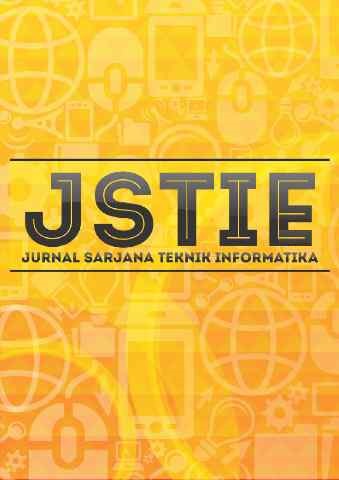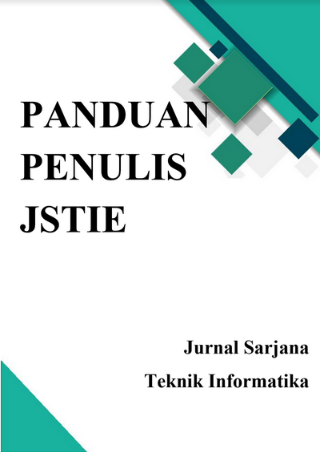Pengembangan Fitur Item Box Pada Game Virtual Academy
DOI:
https://doi.org/10.12928/jstie.v10i1.21122Keywords:
Fitur Item Box, Game Virtual Academy, 3DAbstract
Game Virtual Academic bermanfaat untuk memberikan gambaran pengukuran pencapaian mahasiswa di bidang akademik pada program studi Teknik Informatika Universitas Ahmad Dahlan. Namun Game Virtual Academic belum memiliki fitur Item Box, yang dimana fitur tersebut berfungsi untuk mengetahui Item-Item yang sudah didapat dari pencapaian yang telah diperoleh setiap semesternya. Oleh karena itu adanya fitur item box yang dimana dapat memodelkan nilai capaian mahasiswa menjadi item sehingga dapat diukur kedalam game. Dalam pembuatan fitur item box menggunakan metode Rapid Application Development (RAD), suatu proses pengembangan perangkat lunak yang bersifat incremental terutama untuk waktu pengerjaan yang pendek. Dan terakhir dilakukan pengujian terhadap kepuasan user dengan metode Software Usability Scale (SUS). Hasil pengujian 3D model dengan menggunakan pengujian kualitas multimedia menunjukan bahwa 3D model yang dibuat terlihat nyata. Berdasarkan nilai yang diperoleh dengan rata-rata 4,58 skala 5 maka 3D model masuk kategori acceptable yang artinya System Usability Scale dapat diterima. Sedangkan untuk pengujian fitur menggunakan metode Black Box dengan menguji 16 test case yang ada, seluruh fungsi berjalan dengan normal dan baik.References
N. Pellas and S. Mystakidis, “A Systematic Review of Research about Game-based Learning in Virtual Worlds,” JUCS - J. Univers. Comput. Sci., vol. 26, no. 8, pp. 1017–1042, Aug. 2020, doi: 10.3897/jucs.2020.054.
& S. D. Arini, Yusuf Durrachman, “Visualisasi 3 Dimensi Sistem Peredaran Darah Manusia Menggunakan Teknik Low Poly dan Particle System,” 2013.
V. Y. P. Ardhana, M. Sapi’i, and E. A. M. Sampetoding, “Web-Based Library Information System Using Rapid Application Development (RAD) Method at Qamarul Huda University,” vol. 6, no. 1, p. 8, 2022.
A. R. Chrismanto, H. Budi, A. Wibowo, R. Delima, and R. Ariel, “Developing Agriculture Land Mapping using Rapid Application Development (RAD): A Case Study from Indonesia,” Int. J. Adv. Comput. Sci. Appl., vol. 10, no. 10, 2019, doi: 10.14569/IJACSA.2019.0101033.
F. O. Albalawi and M. S. Maashi, “Selection and Optimization of Software Development Life Cycles Using a Genetic Algorithm,” Intell. Autom. Soft Comput., vol. 28, no. 1, pp. 39–52, 2021, doi: 10.32604/iasc.2021.015657.
D. I. Sensuse, H. N. Rochman, S. Al Hakim, and W. Winarni, “Knowledge management system design method with joint application design (JAD) adoption,” VINE J. Inf. Knowl. Manag. Syst., vol. 51, no. 1, pp. 27–46, Jan. 2020, doi: 10.1108/VJIKMS-10-2018-0083.
A. Walden, L. Garvin, M. Smerek, and C. Johnson, “User-centered design principles in the development of clinical research tools,” Clin. Trials, vol. 17, no. 6, pp. 703–711, Dec. 2020, doi: 10.1177/1740774520946314.
“A Methodology for Incorporating Quality Assurance Practices during Software Development Life Cycle,” Int. J. Adv. Trends Comput. Sci. Eng., vol. 10, no. 3, pp. 2296–2301, Jun. 2021, doi: 10.30534/ijatcse/2021/1141032021.
S. M. Salve, S. N. Samreen, and N. Khatri-Valmik, “A Comparative Study on Software Development Life Cycle Models,” vol. 05, no. 02, p. 6.
W. N. Cholifah, Y. Yulianingsih, and S. M. Sagita, “Pengujian Black Box Testing pada Aplikasi Action & Strategy Berbasis Android dengan Teknologi Phonegap,” STRING Satuan Tulisan Ris. Dan Inov. Teknol., vol. 3, no. 2, p. 206, 2018, doi: 10.30998/string.v3i2.3048.
Downloads
Published
Issue
Section
License
License and Copyright Agreement
In submitting the manuscript to the journal, the authors certify that:
- They are authorized by their co-authors to enter into these arrangements.
- The work described has not been formally published before, except in the form of an abstract or as part of a published lecture, review, thesis, or overlay journal. Please also carefully read Journal Posting Your Article Policy.
- The work is not under consideration for publication elsewhere.
- The work has been approved by all the author(s) and by the responsible authorities – tacitly or explicitly – of the institutes where the work has been carried out.
- They secure the right to reproduce any material that has already been published or copyrighted elsewhere.
- They agree to the following license and copyright agreement.
Copyright
Authors who publish with Jurnal Sarjana Teknik Informatika agree to the following terms:
- Authors retain copyright and grant the journal right of first publication with the work simultaneously licensed under a Creative Commons Attribution License (CC BY-SA 4.0) that allows others to share the work with an acknowledgement of the work's authorship and initial publication in this journal.
- Authors are able to enter into separate, additional contractual arrangements for the non-exclusive distribution of the journal's published version of the work (e.g., post it to an institutional repository or publish it in a book), with an acknowledgement of its initial publication in this journal.
- Authors are permitted and encouraged to post their work online (e.g., in institutional repositories or on their website) prior to and during the submission process, as it can lead to productive exchanges, as well as earlier and greater citation of published work.








